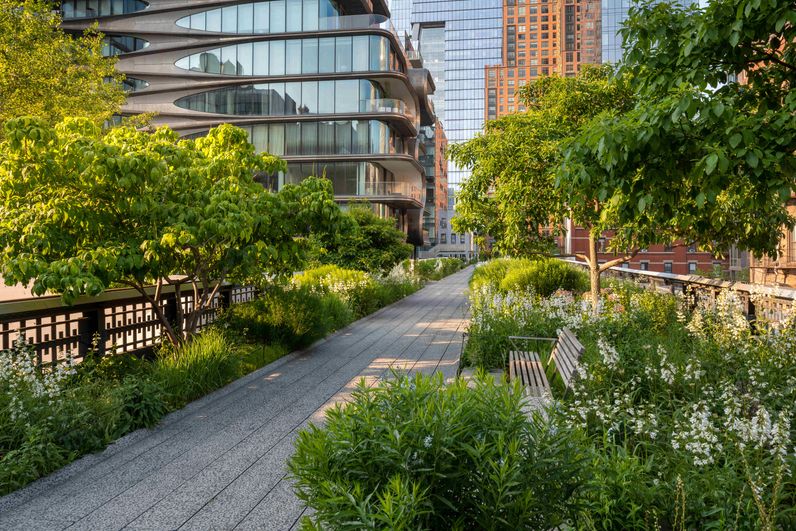Why Placemaking Is Everywhere: From Retail to Logistics and Beyond
Placemaking has become a buzzword in urban design, real estate, and even corporate strategy. But why is it so prevalent today—and why does it matter for retail, office spaces, neighborhoods, and logistics hubs?
What Is Placemaking?
Placemaking is more than just designing a space; it’s about creating meaningful, people-centered environments that foster social interaction, cultural identity, and economic vitality. Unlike traditional planning, which often prioritizes infrastructure, placemaking focuses on human experience—how people feel, connect, and engage in a space.
Why the Surge in Placemaking?
-
The Shift to Experience-Driven Spaces: Consumers and employees now expect more than functionality—they want experiences. Retailers are turning stores into community hubs with events, workshops, and immersive design. Offices are adopting hospitality-inspired layouts to attract talent back from remote work.
-
The Hybrid Work Revolution: With hybrid work models, offices are no longer just about desks—they’re about collaboration, culture, and connection. Placemaking principles help create spaces that employees actually want to visit, blending comfort with productivity.
-
Urban Revitalization & Community Identity: Cities are using placemaking to revitalize underused spaces, turning abandoned industrial zones into vibrant mixed-use districts. This approach strengthens local identity and fosters inclusivity.
-
Logistics & Industrial Spaces Go Human-Centric: Even logistics parks are embracing placemaking—adding green spaces, bike paths, and amenities to attract workers and integrate better with surrounding communities. It’s about making functional spaces livable.
-
Sustainability & Well-Being: Placemaking aligns with green design and well-being trends: integrating nature, promoting walkability, and reducing environmental impact. These factors are now critical for ESG goals and brand reputation.
-
A Response to Digital Fatigue: Smartphones and digital platforms have transformed how we live, but they’ve also led to disconnection and overstimulation. Placemaking creates environments that encourage people to look up, slow down, and engage.
-
Reclaiming Public Life: As online spaces become more dominant, placemaking helps reclaim public life. It turns passive spaces into active ones—where people gather, share experiences, and build community.
-
Bridging Physical and Digital: Placemaking doesn’t reject technology—it integrates it thoughtfully. Smart cities use sensors and data to enhance urban experiences, while retail and office spaces blend digital tools with physical design to create hybrid environments.
International Examples of Placemaking in Action
-
The High Line, New York City (USA): An abandoned elevated railway turned into a linear park with art, seating, and greenery—revitalizing surrounding neighborhoods and boosting local economies.
-
Cheonggyecheon Stream, Seoul (South Korea): A stunning urban renewal project that transformed a buried stream and highway into a 11-km-long public green corridor. It features walkways, bridges, water features, and cultural zones—bringing nature, history, and community back into the heart of the city.
-
Marina Bay, Singapore: An iconic waterfront development that integrates residential, commercial, and recreational spaces with world-class architecture and lush public amenities. Highlights include Gardens by the Bay, Marina Barrage, and pedestrian-friendly promenades.
-
Millennium Park, Chicago (USA): A landscape placemaking success, this downtown park features the famous Cloud Gate sculpture (“The Bean”), the Jay Pritzker Pavilion, and Lurie Garden. It’s a cultural and recreational hub that revitalized the city center and attracts millions annually.
-
Zuidpark, Antwerp (Belgium): A transformative project that reclaimed the historic Gedempte Zuiderdokken—once a lifeless parking lot—into a vibrant, inclusive urban park. With water gardens, lush green zones, cultural squares, and climate-resilient design, Zuidpark is a new benchmark for sustainable placemaking in Europe. [Zuidpark b...Award LILA]
-
King’s Cross Redevelopment – London, UK: Once a neglected industrial area, King’s Cross has been transformed into one of London’s most vibrant mixed-use districts. The redevelopment blends historic architecture with contemporary design, creating a dynamic urban hub featuring offices, cultural venues, public squares, and green spaces. Anchored by landmarks like Granary Square and Coal Drops Yard, the project emphasizes walkability, community engagement, and sustainability—making it a global benchmark for placemaking.
The Takeaway
Placemaking is no longer optional—it’s a strategic imperative. Whether you’re designing a retail store, an office campus, or a logistics hub, the goal is the same: create spaces that people love, not just use. In a world where

